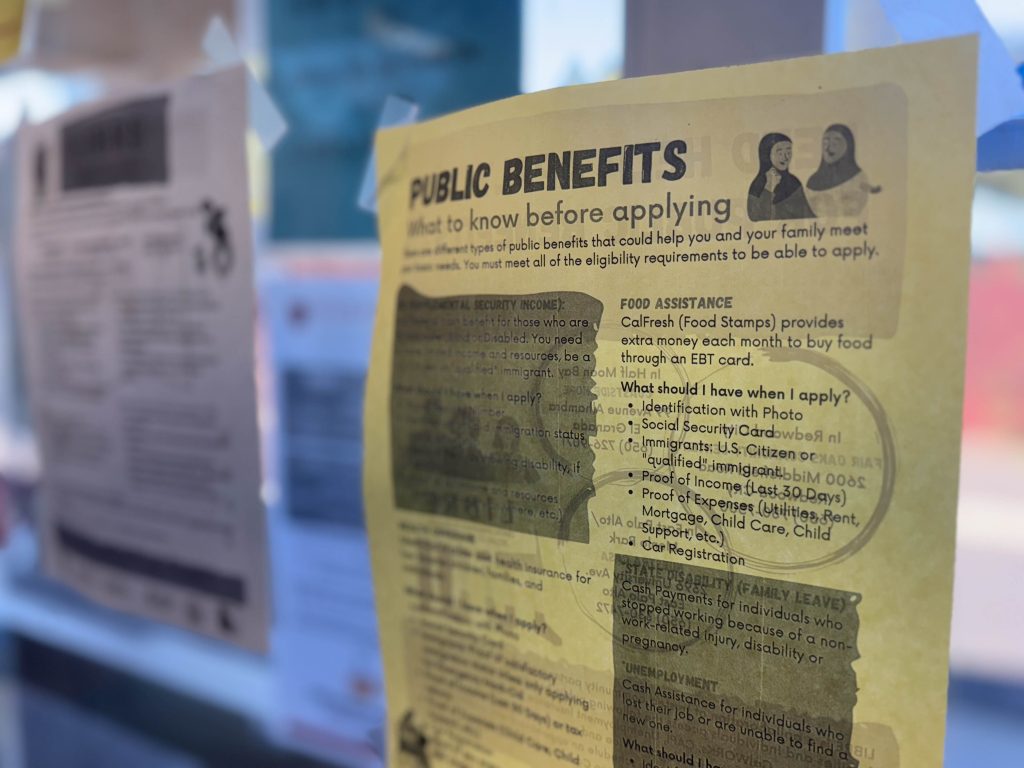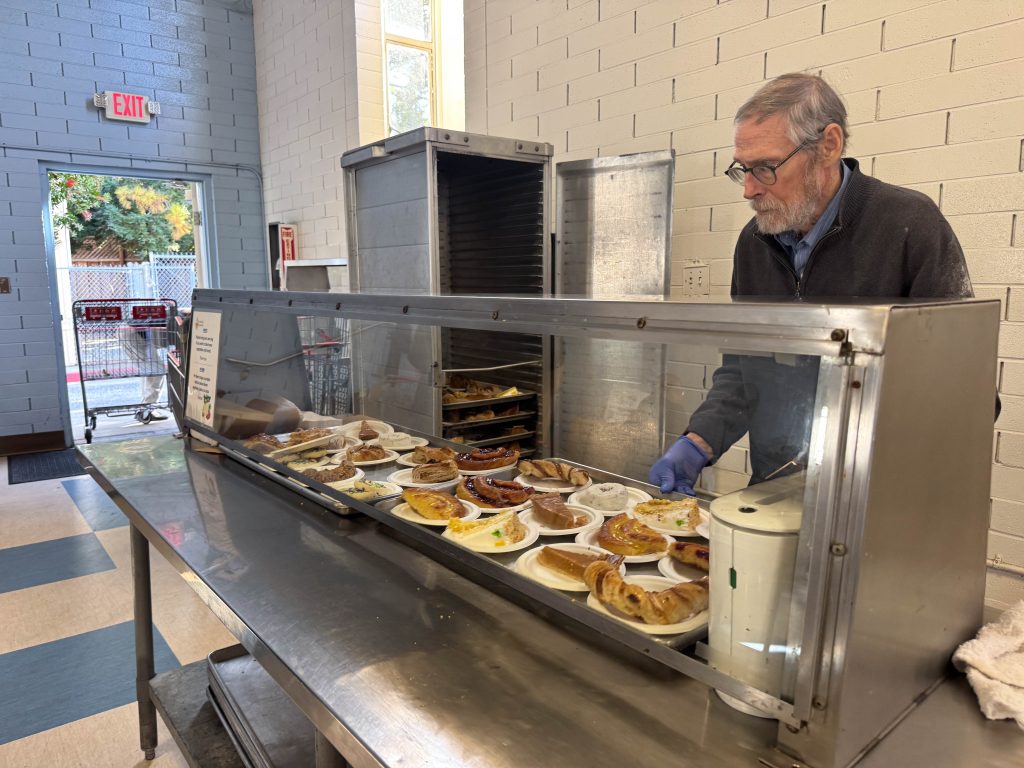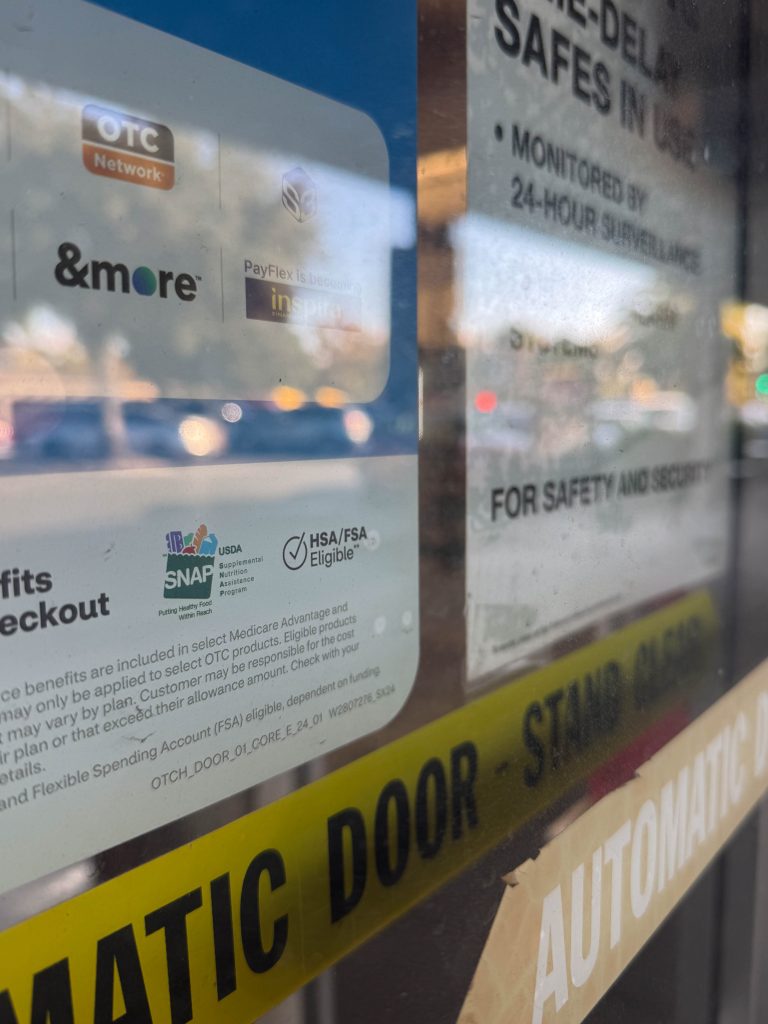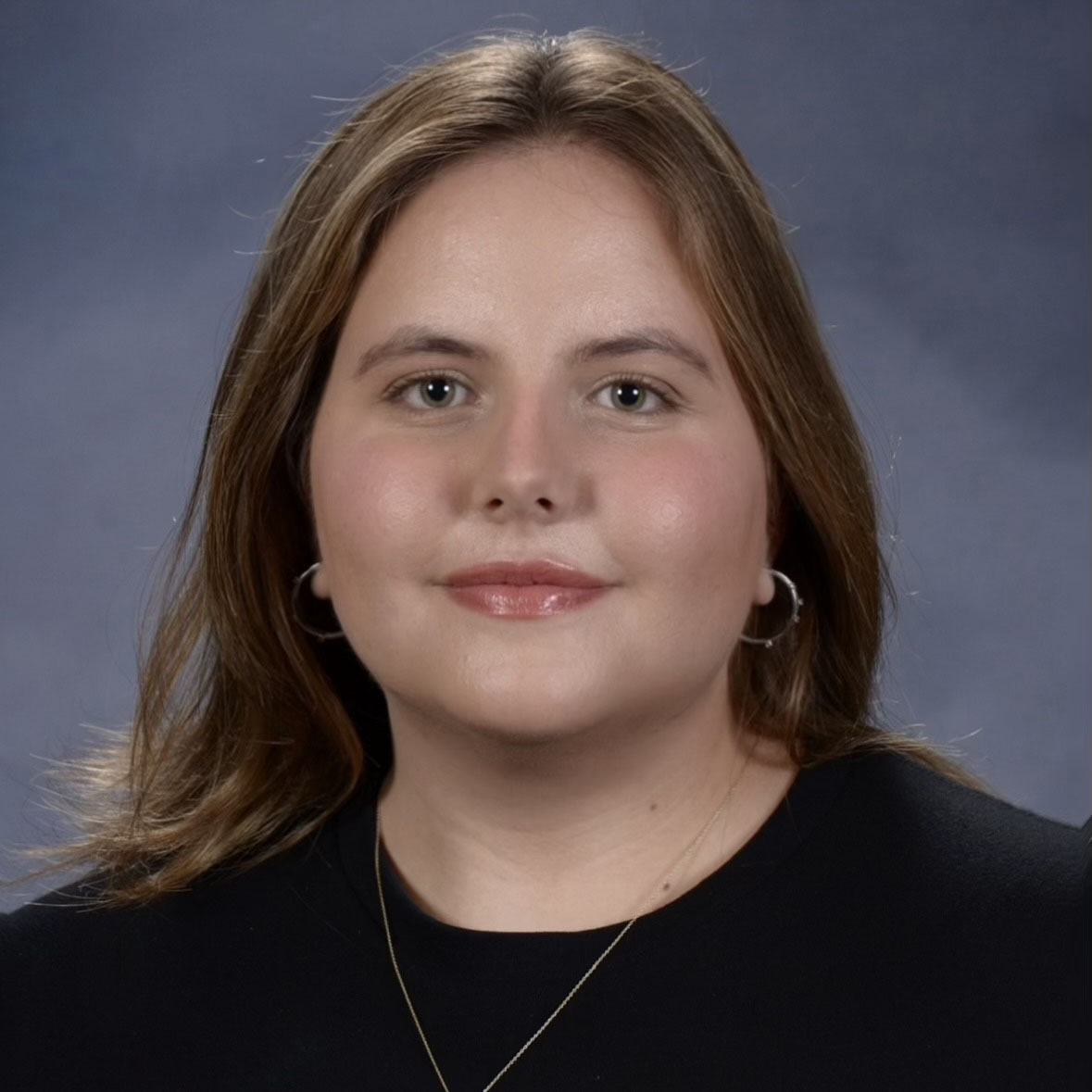
By noon on Nov. 1, the line at St. Anthony’s Padua Dining Room spilled out the door as patrons waited for a hot meal from the church’s food distribution center in Menlo Park, Calif. The Dining Room is one of hundreds of organizations in the Bay Area bracing for increased need as funding for the Supplemental Nutrition Assistance Program or “SNAP” expires.
“People are preparing themselves for what is coming,” said Max Torres, the operations manager at St. Anthony’s Padua Dining Room. For the month of October, Torres notes that the Dining Room served upwards of 9,000 meals, an over 10% increase in patrons.
“On November 1st, when folks lose access to their SNAP benefits, that’s going to mean 168,000 of our neighbors suddenly not having access to this critical lifeline,” said Leslie Bacho, CEO of Second Harvest of Silicon Valley, a regional food bank serving San Mateo and Santa Clara Counties.
As the government shutdown enters its 32nd day, funding for SNAP (known as CalFresh in California) is caught in the crosshairs. Nearly 42 million Americans and 5.5 million Californians, many women and children, will be left without crucial access to food benefits. In Santa Clara and San Mateo roughly 5% of households in both counties face uncertainty, as funding for federal food assistance expires.

The nationwide food program aimed at supporting low-income individuals and persons with disabilities, cannot be funded for the year until a government funding bill is passed. The Trump Administration has rebuffed suggestions to utilize roughly $6 billion in USDA emergency funds to temporarily fill the funding gap. The state of California has sued the Trump administration over the decision and a federal judge recently ordered the administration to pay SNAP benefits out of the contingency fund. It remains unclear if the administration has or will comply with the order.
Today, SNAP recipients are feeling the impact.
“I relied on SNAP heavily for food and now I’m not going to receive it,” said Summer Wahab, 31, a life-long California resident. “Things are going to be really tough. I’m not going to have any money for food and I’m new to this area and I don’t know what to do, where to go.”
As a single mother of three and full-time Stanford undergraduate student, Wahab relies on SNAP to provide healthy food for herself and her children. Wahab grew up in the foster care system, has experienced homelessness and SNAP has been essential in allowing her to pursue an education and raise her children.
“ Many of the folks we serve are families. They are often working families, working multiple jobs, trying to juggle paying for childcare, paying their rent, paying their utility bills, and still being able to afford food,” said Bacho.
The disruption in SNAP benefits dovetails with a broader cost of living crisis in the region. “ A lot of people don’t realize this is actually people who are working, and still, because of the high cost of living in the Bay Area or in California, still don’t have enough money to put food on the table,” said California State Senator Josh Becker (Cal-District 13).
In Santa Clara and San Mateo Counties, 6.9% and 6.1% of households, respectively, live in poverty, according to the most recent U.S. Census Bureau.
In 2024, more than half of SNAP recipients were households with children and over 30% were families with members who have a disability or are over 65 years old.
“At the moment, I’m just cutting things. I’m just not eating a whole lot. I’m scrimping and saving,” said Dawn B., a Sunnyvale resident who has utilized SNAP since they became disabled in 2016. Every month, SNAP funds paired with the rising cost of living, are not enough to cover Dawn’s food bills. At 90 pounds and facing ongoing health challenges, her doctors are worried about malnutrition. SNAP funding delays, she worries, will only exacerbate the issue.
“The small amount of money that I get that’s not an entitlement. I’m disabled. I live alone. I’m just doing what I have to do to get by. If I could work, I’d much rather go back to my career and the house that I used to own,” Dawn said.
“I didn’t choose this,” she added. “People don’t choose to become disabled.”
Filling the Funding Gap

All across the Bay Area, leaders are moving to fill the SNAP funding gap. In San Francisco, the city has pledged to honor SNAP benefits through the month via a public-private partnership. Both San Mateo and Santa Clara Counties have also appropriated additional funds for food security, although funding for SNAP has not been filled.
“Local governments cannot backfill the enormous holes callously created by an administration more intent on further enriching the wealthy than providing basic support for the millions of Americans who need that extra bit in a country where wage growth has been enormously outpaced by the cost of living,” said Santa Clara County District 4 Supervisor Susan Ellenberg, in a press conference on Thursday.
“While we cannot do the job of the federal government, Santa Clara County will continue to do everything in our power to mitigate these harmful actions,” she added.
On Oct. 30, the county of Santa Clara announced it will provide $4.5 million in funding to Second Harvest of Silicon Valley, which has 600 distribution sites across the Bay Area.
In San Mateo County, the Board of Supervisors recently voted to approve an additional $888,368 in Measure K funding, collected from a countywide sales tax, which will assist a network of core service agencies to distribute food through October of next year. “San Mateo County stands ready to do everything it can to support residents, but without federal resources in the long run, we are facing a severe food security crisis, even in one of the richest counties in the country,” District 1 Supervisor Jackie Speier said at a press conference on Tuesday.
Resources Stretched Thin

Funding delays have also put increased pressure on the region’s food banks. “Anytime there’s been even a reduction in SNAP benefits, we see our lines get longer,” said Bacho.
Food pantries are already experiencing increased need. In the past week, Bacho says Second Harvest of Silicon Valley has seen a 20% increase in calls to their food connection hotline and 130% increase in online traffic to their food distribution locator.
“It doesn’t stop. It’s a cycle and it keeps on happening,” said Torres of food security challenges. “Who is to assure us that tomorrow will be better than today?”
However, donations have been pouring in across San Mateo and Santa Clara Counties.
“ Within hours, folks were coming into our parking lot, dropping off bags and boxes of food,” said Joan Dentler, district director for Becker, whose office launched an emergency food drive on Oct. 28 to support local food banks and non-profits. The effort has already seen an outpouring of support from residents who, according to Dentler, have donated almost 50 carloads of non-perishable goods.
Despite an outpouring of support, community leaders still have doubts about how long the system can sustain itself. “You are extracting water from a well, how long can you do that? How long before the well gets depleted? said Torres. “…We have supplies needed for today, for tomorrow, for the month and then what?”
*Editor’s Note: Joan Dentler’s title has been updated.


